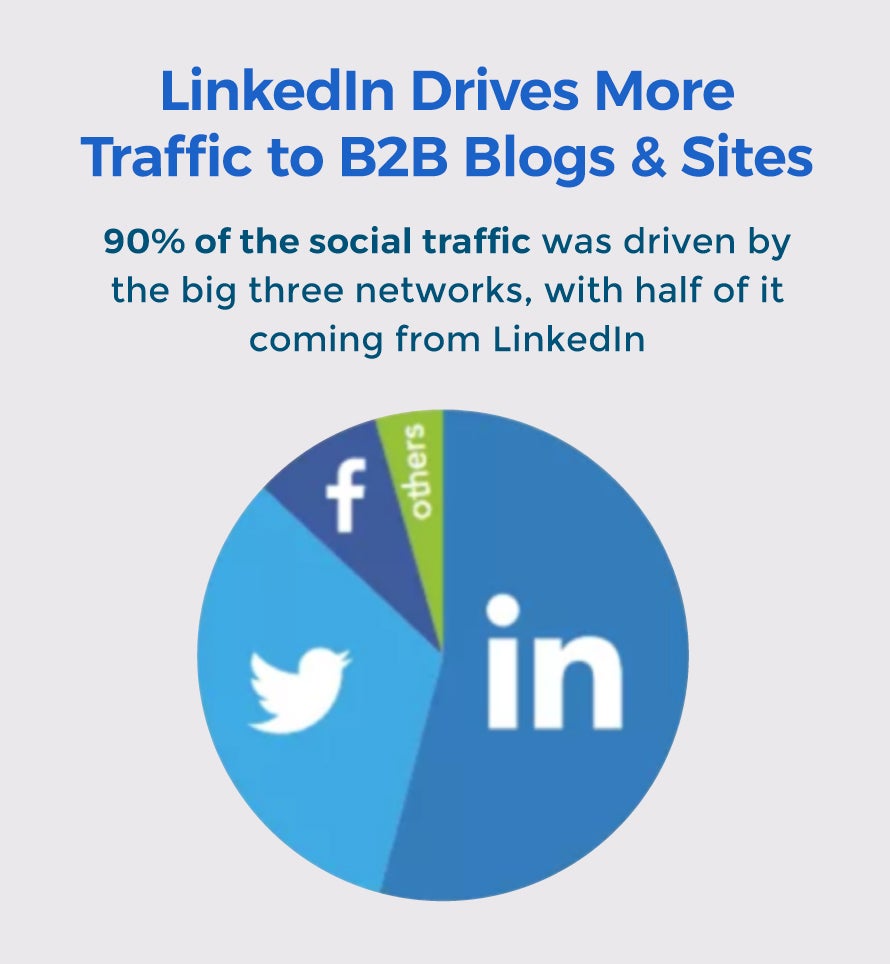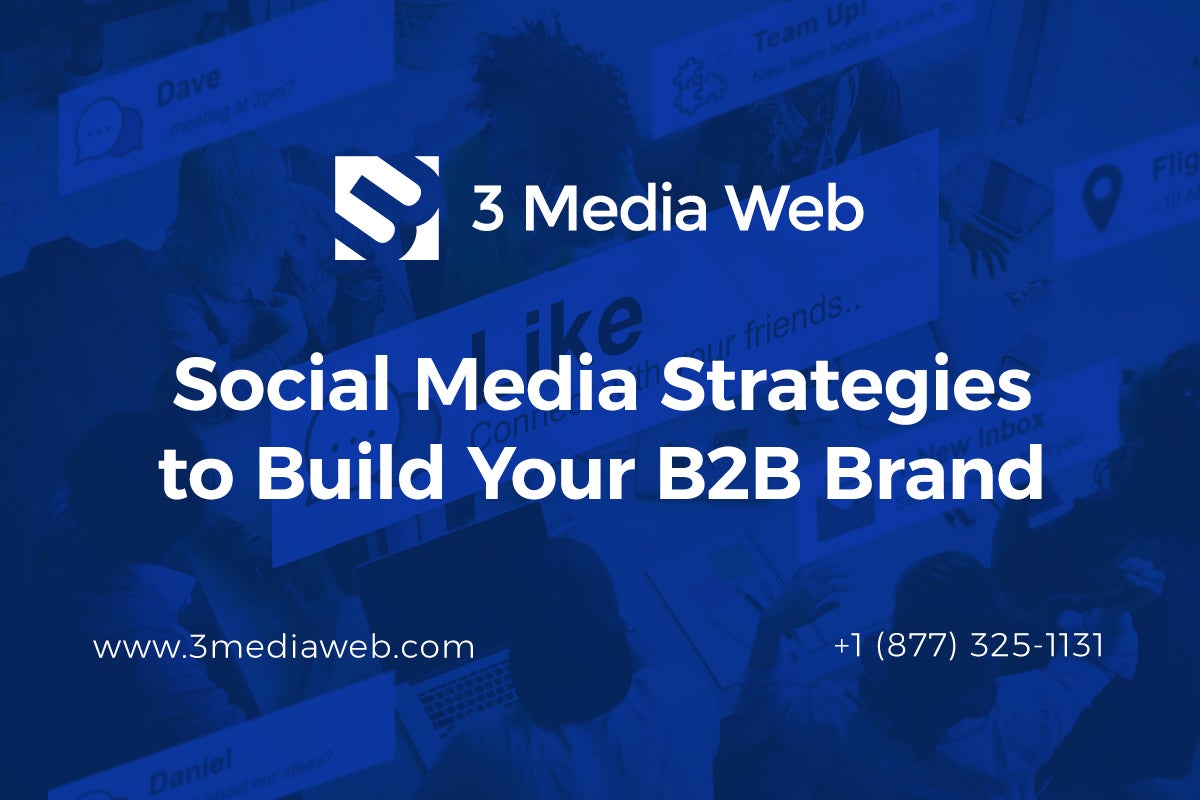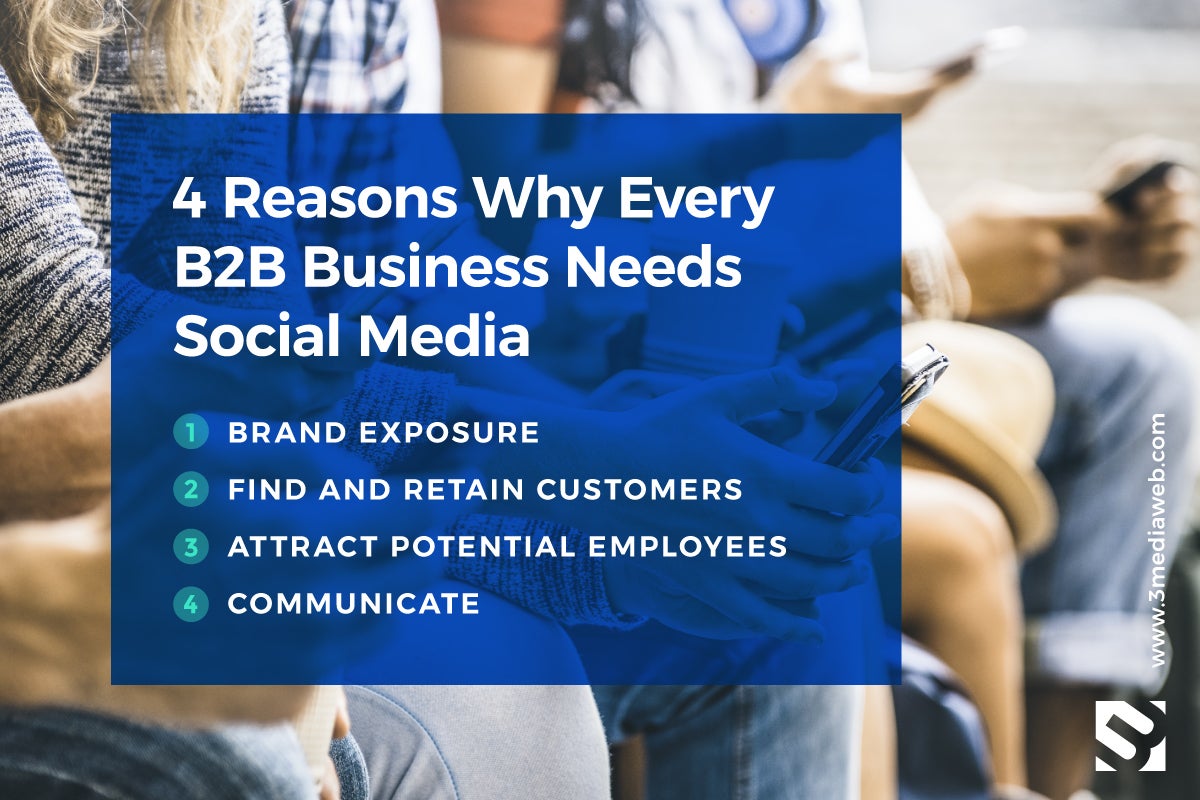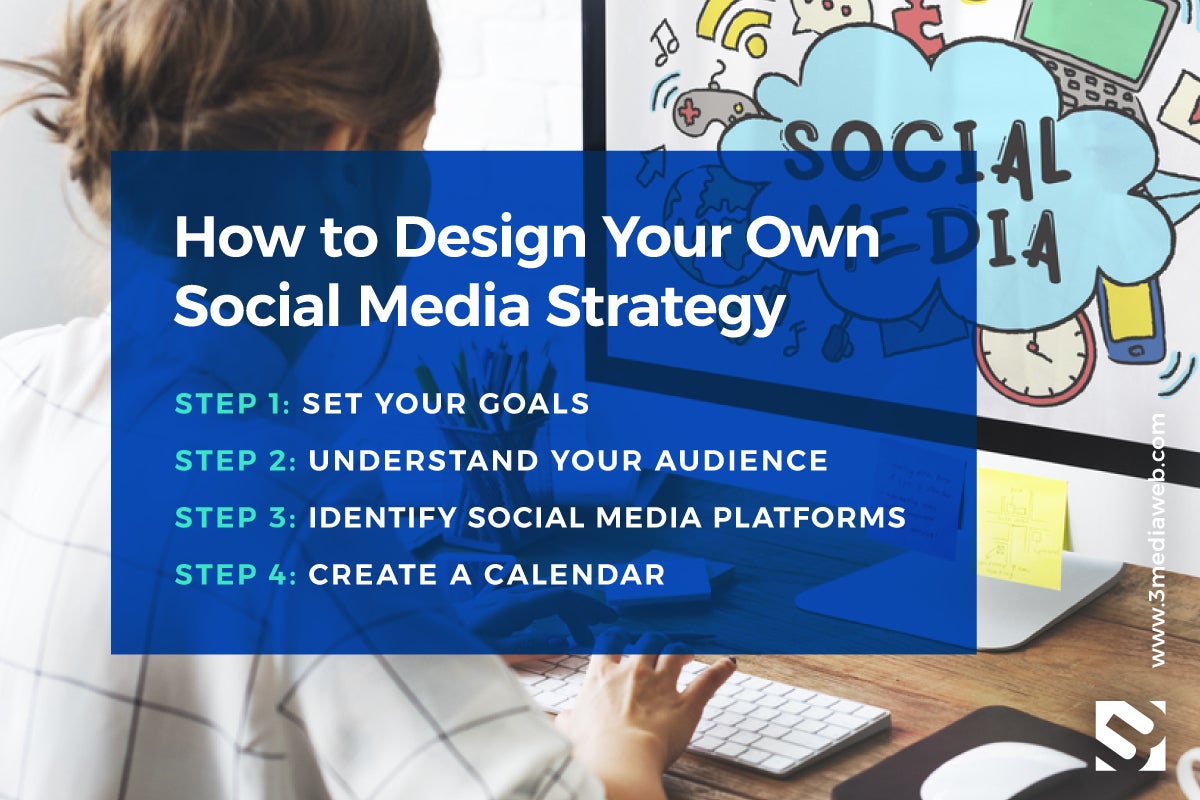5 Reasons Why Every B2B Business Needs Social Media
Whatever type of business you have, social media is crucial to your marketing strategy.
IDG Connect found that 76% of B2B tech companies use social media to drive results. In addition, 84% of C-level and VP-level buyers are influenced by social media when making a purchase.
Everyone from company decision makers to manufacturing buyers and potential employees are using social media to network and connect with their audience, so if your company isn’t on social media, you’re effectively locking yourself out of the conversation.
1. Brand exposure
Social media has the power and reach to build your brand recognition within a global audience. With the right strategy, social media can help you sell more products and services, form strategic partnerships within your industry, and establish yourself as a thought leader in your field.
2. Find and retain customers
Consumers are bombarded with a never ending stream of information from companies all competing for their time, attention, and business. According to research, over a third of American consumers (33%) say that brand trust is one of the most important factors in their decision making process when it comes to buying a product or service. Social media offers brands a unique opportunity to connect and have an ongoing conversation with their customers to establish loyalty and trust in the short and long term.
3. Attract potential employees
Social media has changed the business landscape, including how most companies attract and recruit new employees. As people spend more and more of their free time using social media for everything from entertainment to staying up to date on current events and connecting with friends and colleagues, it makes sense that social media would also become an effective tool for recruiting new employees.
Your social media channels are an opportunity to build brand awareness not just with your customers, but with talented and skilled candidates you may not otherwise be able to reach.
4. Communicate with your customers and target audience
With social media, you control the conversation. Unlike other marketing and advertising channels that cast a wide net and can’t necessarily guarantee who will see or interact with your content, your social media followers have chosen to connect with your brand. They want to hear what you have to say, and will share your message with their own networks, giving you the opportunity to grow your reach exponentially with the same investment of time and resources.
How to Design Your Own Social Media Strategy
Social media is a powerful tool for individuals and businesses alike, but in order to be successful and effective, you’ll need a strategy to ensure that your message and content are reaching the right people. Likes and shares are great validation, but like any marketing tool, you need to reach people that are looking for your products and services.
Step 1: Set Your Goals
What do you want your social media campaigns and overall strategy to accomplish? The first step to answering this question is to set your goals.
For example, if your interest is brand awareness, you’ll likely look at metrics such as likes, shares, and impressions to evaluate the impact and reach of your social media campaigns.
Here’s an example of social media goals from Kemp Edmonds, director of marketing at GetintheLoop:

Step 2: Understand Your Audience
Social media listening helps you find the online conversations that fit and are relevant to your brand. This way, your social media strategy is based on your audience, rather than just your business.
Here’s how you can find conversations based on your industry:
- Competitive insights. Your competitor’s audience is similar to yours and can provide valuable insight into your target audience’s needs, pain points, and behavior. For example, if your customer had a viral customer complaint, you can advertise your service as “professional and helpful” and address their problems in a social media post.
- Keywords. Research brand-related keywords and find out which ones are getting more traffic. Not only will this help you get information on your customer’s interests, but you’ll also find out their motives for their search.
- Influencers. Influencers are industry insiders who have a wealth of knowledge about the updates on new products, innovations, and developments in your industry.
- Hashtags. Monitor hashtags related to your brand to understand what people are talking about on social media, and what topics are most likely to resonate at any given moment. Knowledge of trending topics of interest to your audience can also help you plan and brainstorm content ideas.
Step 3: Identify Social Media Platforms
The next step is to determine the social media platform that’s right for your business. A common mistake that many people make when designing a social media strategy is to try and be everything to everyone on every social media platform. For the best results, you’ll want to target the platforms that make the most sense for your brand and your marketing strategy.
There are currently four social media platforms that you should target. Let’s discuss them one by one.
LinkedIn is a professional networking platform, so it’s no surprise that it’s the most popular among B2B professionals.
In fact, 93% of B2B marketers consider it as the most effective site for lead generation. It is also responsible for 64% of all visits from social media sites to corporate websites.
LINKED IN is a way to build relationships, and creates conversations among like-minded people in the business community.

When posting content on LinkedIn, marketers usually post thought leadership insights and company updates. They also connect with professionals via InMail.
For example, General Electric’s LinkedIn page has videos about their latest innovations, which gets hundreds of likes.
There are over 1 billion active accounts on Instagram. So if you want to stand out, then you need to post visually attractive photos that stand out from your competition.
You can create posts that feature quotes, user-generated content or your company culture.
For example, Adobe’s Instagram has 804,000 followers. Their success can be attributed to their user-generated content, which is based on their monthly themes. In November 2018, their themes are human, and so far the results are astounding.
According to Forbes, 87% of B2B marketers use Twitter.
Unlike LinkedIn or Instagram, Twitter functions as a customer service platform. It’s used to interact with customers, answer questions and address issues.
You can also use Twitter to send quick updates, promote your services and links to your content like IBM:
For example, if a customer encounters a problem with your product, they’ll probably send you a DM or tag you in a tweet. IBM uses this as an opportunity to interact with their customers.
Company decision-makers spend 74% more time on Facebook than the average user. This makes it an ideal platform for B2B marketers to connect with leads.
Most B2B marketers use Facebook to promote their business, spread the word about their events and more.
To craft a unique style for your brand’s social media presence, create a brand style guide that has details on the look and feel of your brand in various social media platforms. This should also include details on posting frequency so that you and your team can consistently grow your profile and publish content on a consistent basis, which will also help with your SEO.
Step 4: Create a Calendar
A good way to maintain your consistency is to plan ahead.
B2B company HubSpot’s Senior Manager of Acquisition, Lisa Toner, believes that planning is a crucial factor in content success.
“Marketers should be spending as much time promoting their content as they should on producing it. A promo calendar is essential and should include various formats of content to promote the core piece of content, whether that’s a video, ebook, article, etc. You should include a pre-launch phase, launch phase, and post-launch phase in your promo calendar to ensure you build some buzz in the lead up to the launch, capture the majority of people on launch, and then continue to hit new audiences over time after the launch is over.”
HubSpot has a great social media calendar template that you can use to schedule videos, graphics and blog posts that you’ll publish in the next few weeks.
How do you create a killer B2B social media strategy?
In the end, it all comes down to setting specific goals, understanding the social media platform and planning.
Create content based on your objectives and audience. Maintain visual consistency by setting rules and publishing your own style guide. When launching social media campaigns, plan your pre-launch, launch phase and post-launch. Test what works, and adjust accordingly as you scale your digital marketing campaigns.





